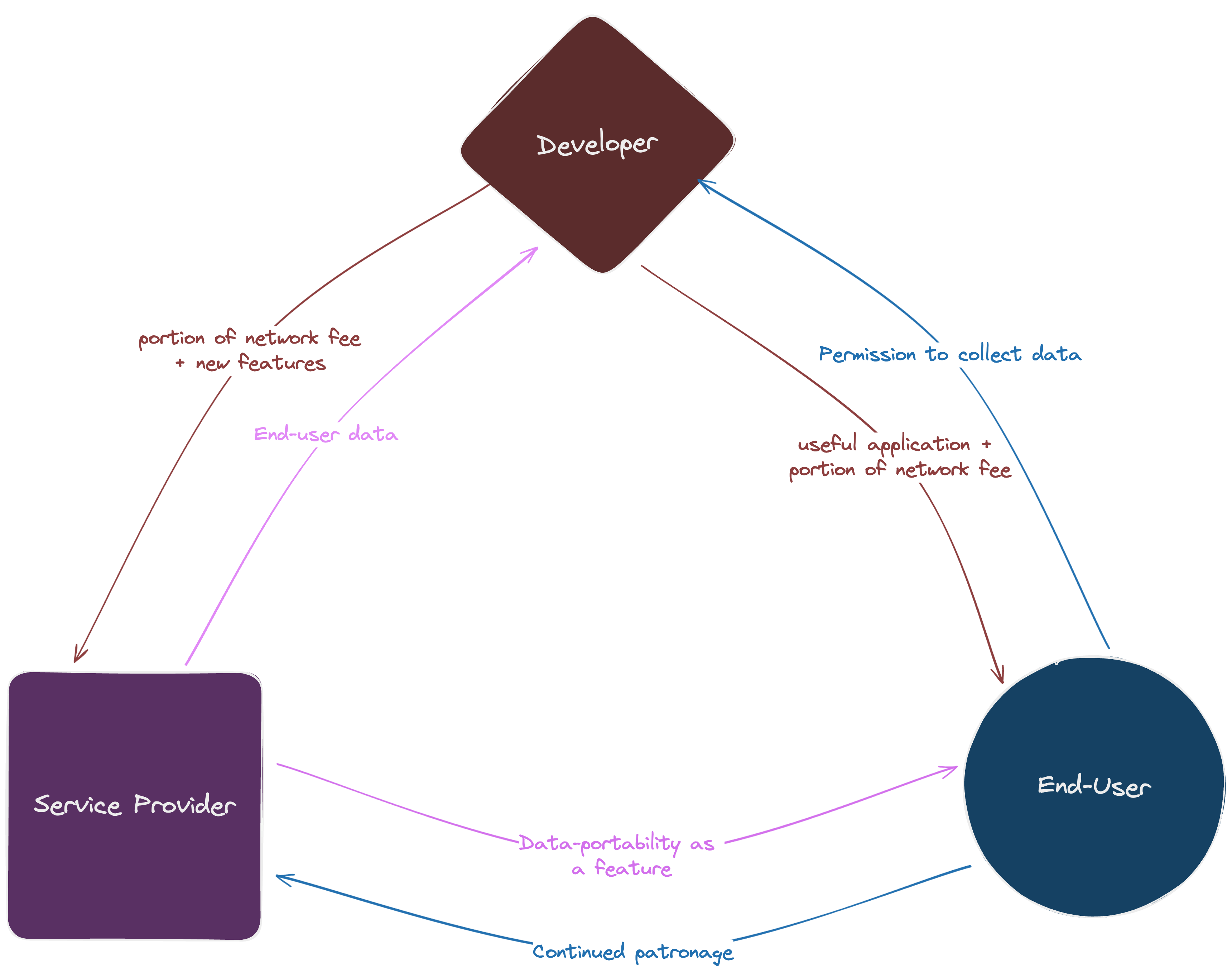The information below represents a preliminary glimpse into the Gandalf Network, emphasizing our goals rather than
established features. As such, everything is provisional and will be refined over time.We’d love feedback and contributions as we build towards this future.
Vision
Our vision for a fully realised, sufficiently decentralised Gandalf Network is guided by the following:1. End-user control
End-users should have full control of the activity data they generate across internet services.- Users can share data with any entity of their choice.
- Users can decide to stop sharing data with any entity at any time.
- Nobody, not even Gandalf Technologies Inc, can prevent the users from doing any of the above.
2. Decentralised developer platform
At Gandalf, we draw great inspiration from platforms like Ethereum & Farcaster. We believe the world benefits when software developers can build on a platform free from the worry of unilateral API changes. No one wants to dedicate their life to building on a foundation that might vanish without warning. Furthermore, we believe that a platform flourishes when developers can contribute to its growth, rather than it being shaped by just one entity.3. Incentive alignment
The Gandalf ecosystem is made up of 3 stakeholders: the End-User, the Developer and Service Providers like Netflix and Amazon. Our goal is to cultivate an ecosystem where the incentives for all parties are aligned:
- Developers are willing to pay a network fee to access data from end-users.
- End-Users have the choice to share their data, motivated by useful applications that enrich their lives. They also receive a small portion of this network fee as a token for their data contributions.
- Service Providers earn a share of the network fee for publishing data on behalf of users, which in turn enhances the value of their applications through richer, developer-created experiences.
Technical Considerations
As we progress from our conceptual vision to tangible implementation, we’re evaluating several technologies to build the network’s infrastructure.Data Verifiablity
Using ZK Proofs with technologies like TLSNotary, we can ensure trustless data provenance without compromising privacy. Data can become portable in a way that allows third-parties building on Gandalf to verify that the data is correct & true, without needing to trust Gandalf.Offchain data, onchain identity & payments.
We are considering a combination of encrypted off-chain data storage to reduce the publishing cost, paired with on-chain mechanisms for identity verification and payment processing. This approach is heavily inspired by Farcaster’s Hub architecture.Quilibrium
We’re also exploring building with Quilibrium. A decentralized internet layer protocol, providing the creature comforts of Cloud without sacrificing privacy or scalability.Aggregate data & cohort analysis with FHE
In our envisioned network, aggregate data should be a public good, offering insights such as- What percentage of users on the Network watched this YouTube video?
- How many of those users bought this product on Amazon?
Roadmap

- Gandalf Alpha Release: This is where we are today. We want to build an SDK that works end-to-end without worrying about decentralisation. Our primary objective is to validate the demand for this product among developers and end-users. We also want to ensure the SDK remains flexible for quick improvements based on feedback and user insights.
- Progressive Decentralisation: Once the core featureset is established, efforts to decentralise all the different facets of the SDK will commence, starting with distributed data storage & data verifiability.
- Sufficiently Decentralised Network: The end-state. A future where the ownership and exchange of consumer data is governed by the end-users themselves, facilitated by a sufficiently decentralised protocol